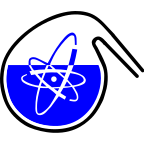Speaker
Description
Nuclear medicine involves the administration of I-131 to patients in order to treat or diagnose thyroid lesions. Commonly, it is administered orally in a liquid or capsule form. Once this radioisotope enters into the patient’s body, it is mainly excreted via urine and in this way it can reach wastewater treatment plants (WWTP) [1]. Consequently, radioiodine can be present in the different stages involved in this kind of facilities. Thus, WWTP workers can be exposed to this isotope via external irradiation or via inhalation due to the possible resuspension of dewatered sludge particles in air [2]. Regarding to this topic, several studies can be found in the literature dealing with the determination of such radionuclide in samples from WWTP [2–4]. In particular, in a previous study carried out by our research group I-131 was found, among other radioisotopes commonly used for medical purposes, in sludge samples taken from a WWTP which collects wastewater from a hospital located in its area of influence. Besides the presence of I-131 in sludge samples, in recent years, attention has been also paid to speciation of I-131 in sludge samples in order to investigate the behaviour of this radioisotope in the process carried out for the sludge treatment [5,6]. However, there is limited literature related to this topic. With this in mind, one of our aims is to evaluate the radioiodine speciation into different sludge samples collected from a WWTP located in Spain by using gamma spectrometry and in this sense try to increase the existing data in this field. Moreover, as some works suggest [7,8], radioiodine can be potentially mobilized to air during the anaerobic digestion process performed in the WWTP. Taking this into account, air sampling was carried out from the digester and dewatered sludge areas of this WWTP to be able to determine if the workers can be potentially exposed under these circumstances.
1 F. Jiménez, R. López, R. Pardo, L. Debán and M. García-Talavera, Radiat. Meas., 2011, 46, 104–108.
2 J. Martínez, A. Peñalver, T. Baciu, M. Artigues, M. Danús, C. Aguilar and F. Borrull, J. Environ. Radioact. Submitted
3 A. Cosenza, S. Rizzo, A. Sansone Santamaria and G. Viviani, Water Sci. Technol., 2015, 71, 252–258.
4 M. Montaña, A. Camacho, R. Devesa, I. Vallés, R. Céspedes, I. Serrano, S. Blàzquez and V. Barjola, J. Clean. Prod., 2013, 60, 77–82.
5 M.-E. Souti, V. Hormann, E. Toma and H. W. Fischer, Ext. Abstr., 2014, 3, 4–7.
6 V. Hormann and H. W. Fischer, J. Environ. Radioact., 2017, 178–179, 55–62.
7 R. Avila, I. De Cruz, S. Sundelll-bergman and S. Hasselblad, Radiological consequences of radionuclide releases to sewage systems from hospitals in Sweden. SSI rapport: 2007:10, 2007.
8 A. Punt, G. Millward and M. Gardner, Science Report - SC020150/SR1 Radionuclide partitioning to sewage sludge - A laboratory investigation, Environment Agency, Bristol, 2007.

